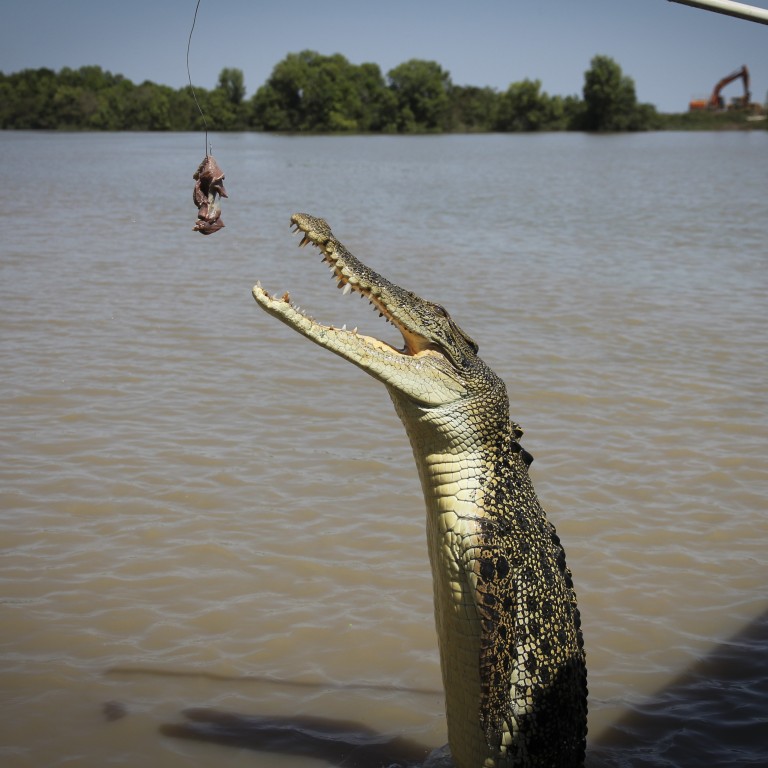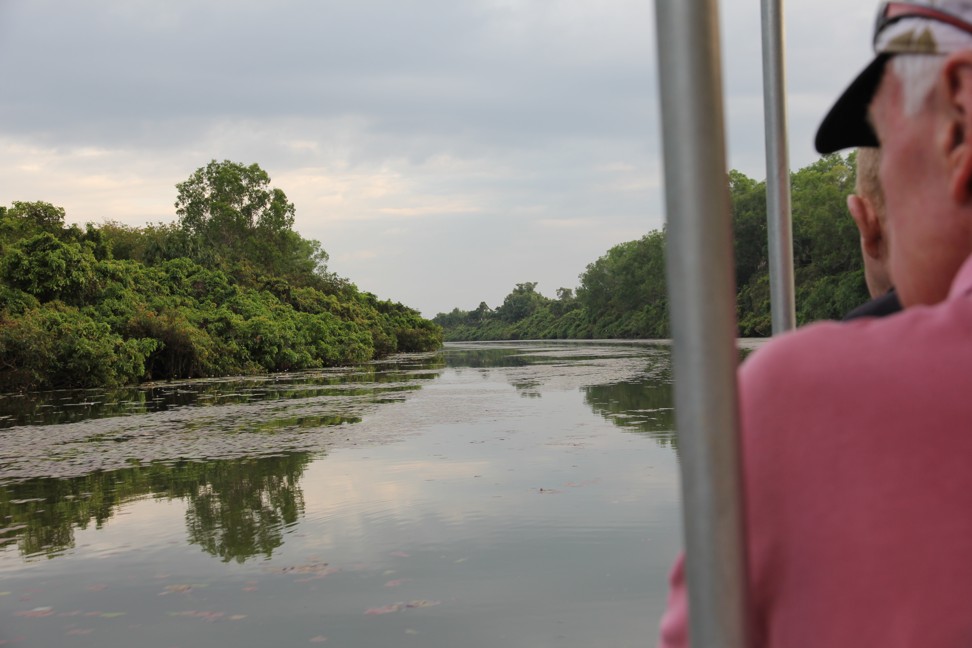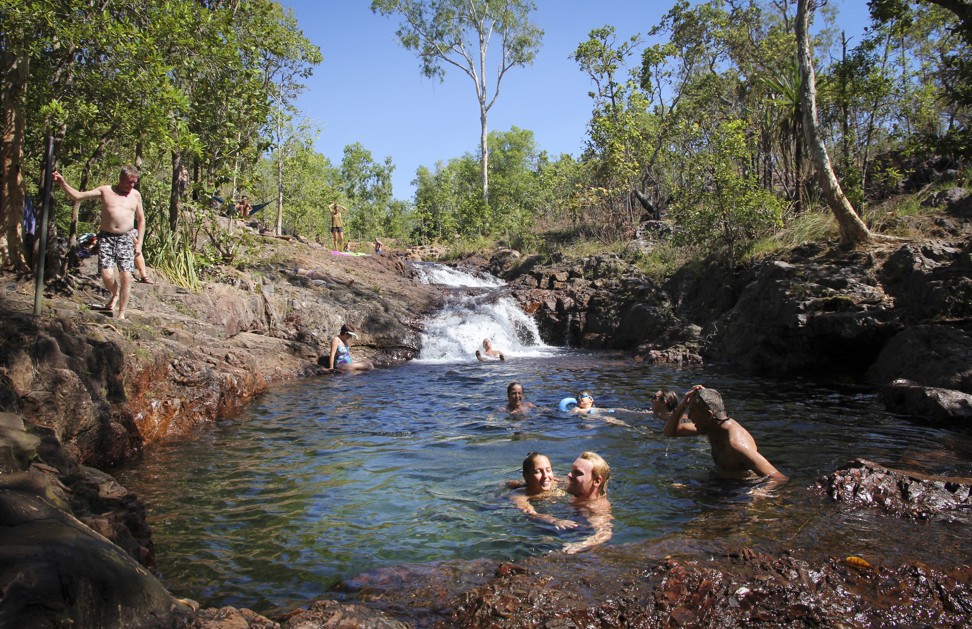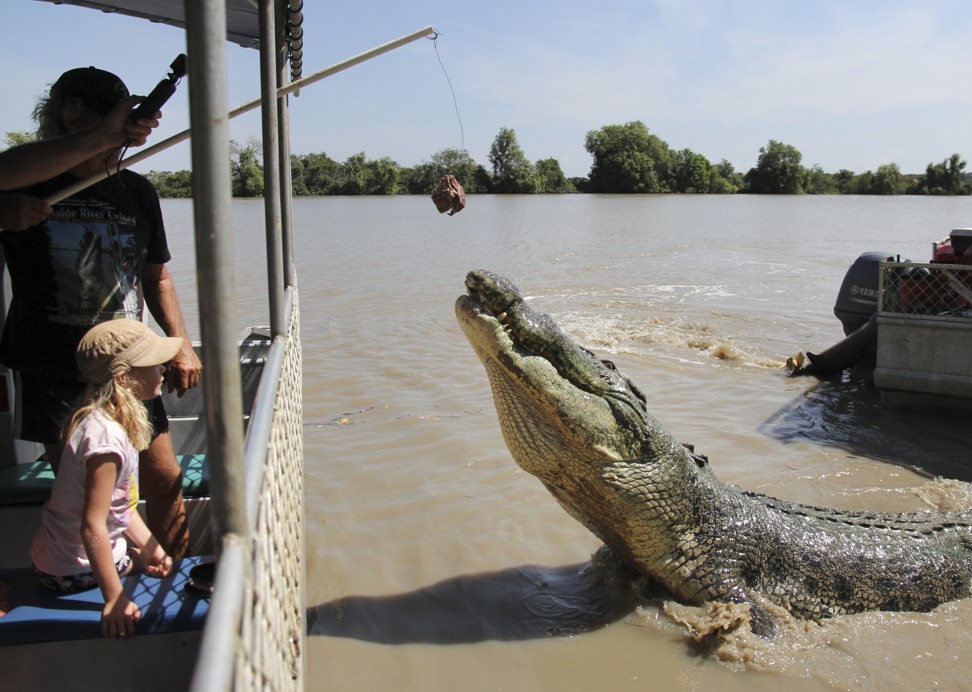
Explore Australia’s wild Northern Territory: jumping crocs and billabongs in the tropical ‘Top End’
- Giant saltwater crocodiles, Aboriginal rock art, open skies and national parks the size of nations are among the Top End’s attractions
- A trip into the wetlands reveals a host of beautiful and sometimes deadly wildlife
“This billabong is home to Big Ass – he’s called that because he is a big ass croc”, ranger Rowan “Rowdy” Sutton tells us as we push off from the banks of the water inlet in a tin boat in search of the prehistoric creature.
Billabongs – an Aboriginal word for bodies of water that form after the wet season – dot this tropical northern part of Australia known to locals as the “Top End”; the vast wetlands rising and receding with the seasons.
The Northern Territory, known to most simply as the NT, is a land of extremes. This lush Top End is a far cry from the arid outback, known as Australia’s “red centre”, which is home to Uluru, the famed sandstone monolith rock formation.

As the sun starts to rise above the tree line in the Mary River wetlands, the wildlife makes the most of the crisp morning before the heat takes hold: the juvenile jabirus (black-necked stork) fight over food scavenged by their parents, the tail of a barramundi can be heard slapping the water, while small bubbles break on the surface of the billabong trailing our boat, signalling the presence of a curious submerged croc.

Rowdy explains that these wetlands flood to become double the size of Singapore in the wet season.
Even the lodge has to close down for part of the year, when it is cut off from the rest of the Top End during “the wet”. The rain brings with it new life.

“It’s a step back in time exploring Mary River National Park. It is very real. It’s still the same as it was 200 years ago. It is pristine,” Rowdy says. With an unruly beard, and a knife on his hip, he’s the Crocodile Dundee figure you would hope to have around if you were to ever find yourself facing off with a croc.
Almost the same size as Mongolia and home to just 210,000 people, the NT is peaceful, pristine and untouched – making it the country’s jewel.

A big part of the tourism industry in this remote part of the world is teaching guests from the “big smoke” about sustainability and how to preserve this land.
“Education is a big part of it. We are really lucky at Wildman and the Mary River that we have been able to preserve, through the national park, a whole chunk of land. It looks the same as it did many years ago,” Rowdy says, directing the boat down the billabong as he points out native birds and overhanging flora.
While Big Ass may have eluded us this morning, I cannot help but feel he knows we are here. After all, from the safety of our boat, we are some of the only people for hundreds of kilometres.

Yet, on the scale of the NT, the Mary River wetlands are a mere drop in the sea of this vast and varied region.
The NT’s Top End offers amazing natural experiences for the whole family. Here are six things to do while exploring Australia’s north to appreciate the might of the great outdoors.

Kakadu National Park
Three hours’ drive southwest of Darwin, Kakadu is Australia’s largest national park and is famed for its wetlands, sandstone escarpments and prehistoric Aboriginal rock paintings. This dual World Heritage Listed park is a must-see for visitors. The same size as Israel, the national park offers several activities, including bush walking, river cruises, bird watching, camping and four-wheel off road driving.
Explore a 1.5km walking circuit at Nourlangie that was once the home to generations of Aboriginal people during the wet season. The escarpment is home to some of the most outstanding Aboriginal rock art, dating back thousands of years.
Kakadu National Park entry prices vary depending on time of year and length of stay. For more information visit the government website.

Leichhardt Point Sundowners, Mary River wetlands
As the sun goes down over Leichhardt Point that looks over the Mary River wetlands, you can spot the buffalo, brolga (crane), jabiru, dingoes and whistling ducks that call the national park home. Enjoy a cold drink and a cheese platter prepared by the Wildman Wilderness Lodge as you take in the seemingly endless expanse.
Leichhardt Point Sundowners, A$85 (US$58). For more information, visit the website

Litchfield National Park
An amazing day trip from Darwin, Litchfield National Park has several stunning waterfalls, crystal clear pools, towering termite mounds and beautiful bush walks.
Pack your swimming gear and head to Florence Falls, where the water cascades into a plunge pool set in a secluded pocket of monsoon forest. A little further into the park, stop off for a refreshing swim at the cascading pool of Buley Rockhole. Here you will find people wading in the shallow pools, exploring the surrounding bush land or sunbathing and reading a book at the water’s edge.

Jumping Crocs
You cannot go to the Top End and not marvel at the power and size of the crocodiles. On the Adelaide River, about an hour’s drive from Darwin, there are a number of jumping crocodile tours that give you the chance to see these powerful creatures at very close range, as they jump to catch small chunks of meat that are dangled overboard.
Adelaide River Cruises, adults A$45, children A$30, under-threes free. For more information visit their website.

Mindil Beach Sunset Markets
Despite being so remote, Darwin is home to a multicultural community with strong influences from Southeast Asia, Europe and the Middle East. The best way to experience its background is to visit the city’s markets, where you can sample food from around the world and pick up handmade trinkets as gifts.
Alkira Reinfrank was a guest of the Wildman Wilderness Lodge.

Before you go
Plan your trip before you go, as there can be hours of driving between locations. The NT is a large part of Australia where phone service is limited. Telstra has the best service coverage.
Best time to go
The NT has two seasons – wet and dry. While the NT is beautiful all year round, it is best to visit during the dry season (May to October). November to April is extremely muggy and wet.

